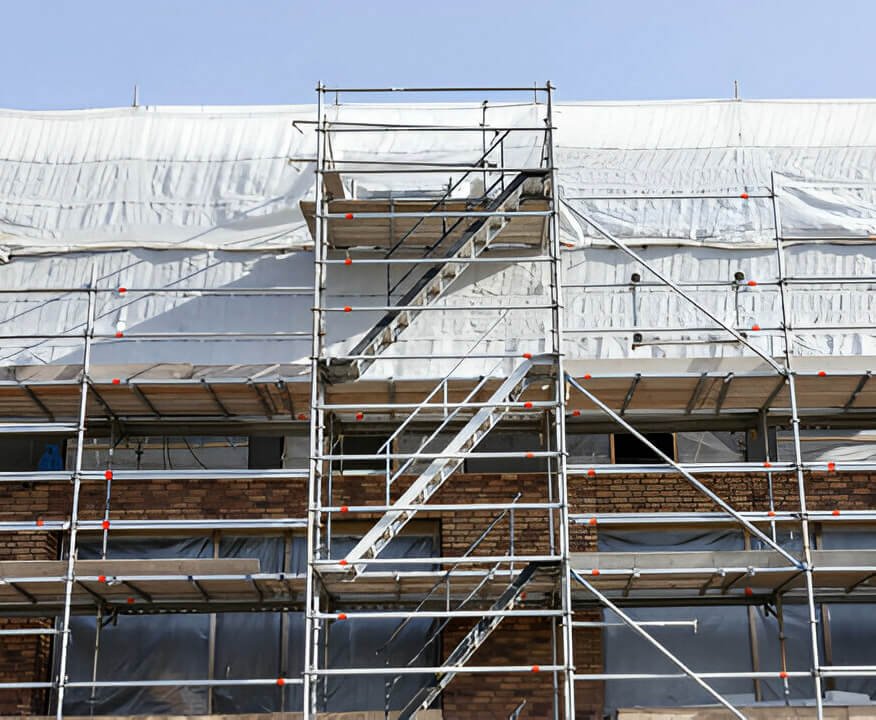Discover Leading Scaffolding Near Me for Your Home or Business Needs
Discover Leading Scaffolding Near Me for Your Home or Business Needs
Blog Article
Checking Out the Various Kinds Of Scaffolding Made Use Of in Construction Projects
The building market depends heavily on different kinds of scaffolding to fulfill particular job demands, each offering distinct advantages and applications. Typical frame scaffolding supplies a durable foundation for basic tasks, while put on hold scaffolding is essential for work on skyscraper frameworks.

Standard Frame Scaffolding
Standard frame scaffolding is among one of the most widely made use of methods in the building and construction market as a result of its effectiveness and flexibility. This system consists of straight and vertical frameworks that are constructed to produce a secure platform for employees and products. The major components consist of vertical posts, horizontal journals, and angled braces, which together provide a solid framework that can support substantial loads.
Among the essential benefits of standard frame scaffolding is its flexibility to numerous construction projects, varying from household buildings to big business frameworks. The modular layout enables very easy assembly and disassembly, making it effective for both lasting and short-term tasks. In addition, the system can be customized in height and width, suiting various building layouts and site problems.
Safety and security is vital in scaffolding applications, and standard structure systems are equipped with guardrails and toe boards to avoid falls and make certain employee security. In addition, routine assessments and adherence to safety and security regulations are important in maintaining the honesty of the scaffold. Overall, standard framework scaffolding continues to be a basic selection in the building and construction market, offering a trustworthy platform for labor and enhancing overall project effectiveness

Suspended Scaffolding
Put on hold scaffolding offers a special option for building and construction jobs that require accessibility to elevated surface areas, especially in situations where conventional structure scaffolding might be unwise. This kind of scaffolding is commonly put on hold from the roof covering or top degrees of a framework, using a system of ropes, sheaves, and systems to develop a functioning space that can be readjusted to various elevations.
Among the key advantages of put on hold scaffolding is its adaptability. It can be quickly repositioned or decreased to suit adjustments in building requirements, making it excellent for jobs such as home window installation, frontage work, and upkeep on high-rise buildings. In addition, the marginal footprint of put on hold scaffolding permits for far better use of ground room in urban environments, where space is typically limited.
Safety is a vital factor to consider in the usage of suspended scaffolding. On the whole, suspended scaffolding offers a effective and efficient solution for accessing hard-to-reach locations in various construction circumstances, improving both productivity and safety and security on website.
System Scaffolding
System scaffolding, often considered a modern remedy in the scaffolding market, includes pre-engineered parts that can be quickly set up and adjusted for different building and construction jobs. Scaffolding. This sort of scaffolding is defined by its modular style, which permits convenience and efficiency on task websites, suiting structural needs and different elevations
Usually made from high-strength steel or aluminum, system scaffolding uses improved longevity and stability. The elements consist of upright posts, horizontal ledgers, and angled braces, which adjoin securely, making certain a robust framework. The style frequently integrates standardized installations, simplifying setting up and disassembly procedures, therefore decreasing labor time and costs.

Rolling Scaffolding
Rolling scaffolding is a functional choice to traditional set scaffolding, designed for movement and convenience of use on construction websites. This kind of scaffolding contains a platform sustained by frameworks with wheels, allowing employees to conveniently transfer it as needed. The mobility function dramatically enhances efficiency, as it reduces downtime related to constructing and taking apart repaired scaffolding.
Normally constructed from lightweight products such as light weight aluminum or steel, rolling scaffolding supplies a tough yet portable service for jobs calling for regular repositioning - Scaffolding. It is particularly beneficial in jobs such as paint, drywall installation, and electric work, where accessibility to numerous heights and places check this is essential
Safety is Find Out More extremely important in rolling scaffolding style, with features such as securing wheels to stop unplanned activity when in operation, and guardrails to protect employees from drops. Additionally, numerous versions are adjustable in elevation, accommodating numerous task needs.
Cantilever Scaffolding

The style of cantilever scaffolding usually includes using brackets or arms anchored to a building or framework, enabling the system to expand outside securely. Safety and security is critical; thus, these scaffolds must be engineered to hold up against environmental conditions and numerous tons. Routine inspection and upkeep are important to make sure structural integrity and worker safety and security.
Cantilever scaffolding is preferred for its versatility and reliable use room, making it a preferred option in metropolitan settings where room restraints are usual. Moreover, it assists in much easier access to high altitudes, eventually adding to the overall performance of building jobs. As with all scaffold kicker scaffolding types, appropriate training and adherence to safety and security requirements are crucial for workers utilizing cantilever scaffolding.
Conclusion
Standard structure scaffolding offers security, while put on hold scaffolding supplies flexibility for raised tasks. System scaffolding assists in fast assembly, and rolling scaffolding improves flexibility for differing job environments.
Traditional structure scaffolding offers a strong foundation for basic tasks, while suspended scaffolding is vital for job on high-rise structures.Moving scaffolding is a versatile choice to typical fixed scaffolding, created for wheelchair and convenience of usage on building and construction websites. As with all scaffolding kinds, proper training and adherence to security requirements are vital for workers using cantilever scaffolding.
Typical frame scaffolding provides security, while put on hold scaffolding offers flexibility for elevated tasks. System scaffolding assists in quick assembly, and rolling scaffolding enhances movement for varying job environments.
Report this page